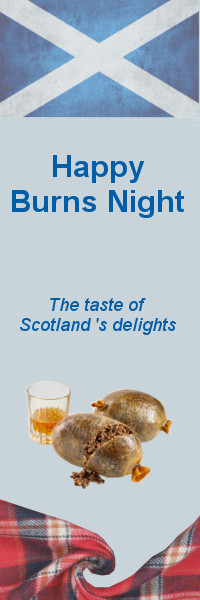Your basket is currently empty!

With Burns Night around the corner, many of you will probably be sampling a wee dram or two. But is it better to add water or ice to your glass or to drink the whisky on its own? The best way to find out is to look at its history and methods of production.
The word whisky is an Anglicisation of the Gaelic uisge, which simply means water. This comes from the longer phrase uisge beatha meaning “water of life”. This was a phrase commonly used for distilled alcohol in ancient times, for example in Latin it is aqua vitae. Whisky distillation occurred in Scotland from the 15th Century however, the resulting spirit was not aged as it is today. This resulted in a much harsher taste. Even so, Scotch whisky was apparently a favorite of King James IV of Scotland.
By the mid-19th century, the practice of aging whisky in casks was in use resulting in a much smoother taste. In 1831 Aeneas Coffey invented the Patent Still leading to the production of grain whisky, before only malted barley was used. In 1850 producers began to mix the lighter grain whisky with the more fiery malt whisky resulting in a blended whisky. Not to be confused with a blended malt whisky, which is a blend of single malts from different distilleries. A single malt whisky comes from the malt from one particular distillery but comes from a variety of casks. A single cask whisky is one that comes from only one cask.
Whether a blended whisky or a single malt, water is vital to its production. Distilleries in Scotland draw their water from many different sources to produce a variety of unique flavours. The geology of Scotland is highly varied which means a huge difference in the mineral content of the water sources. For example, Highland water has almost twice the mineral content of water from Speyside. This means the location of the distillery will affect the flavour of the finished product.
As water used in the distillation process affects the flavour so can adding water or ice to your whisky. Adding ice to whisky cools it down rapidly. This reduces the burn of the alcohol but can also subdue some of the flavours. The opposite is true when adding water to whisky and the temperature raises slightly. This can open up the whisky allowing the tasting of more subtle flavours. The chemical composition of the water can also bring out different flavours. A water containing high levels of minerals such as Magnesium and Calcium may bring out more floral and herbal notes. Whereas a more acidic water may highlight the peat and iodine aromas.
So is it better to add water, ice, or neither? The answer is whichever you prefer; it’s all a matter of personal taste. Take a sip before you add anything to get an idea of which would be most to your liking. Next time you have a glass why not experiment with Magnesium Mineralized Water and see how it compares.
Enjoy yourself this Burns Night and Slàinte!

